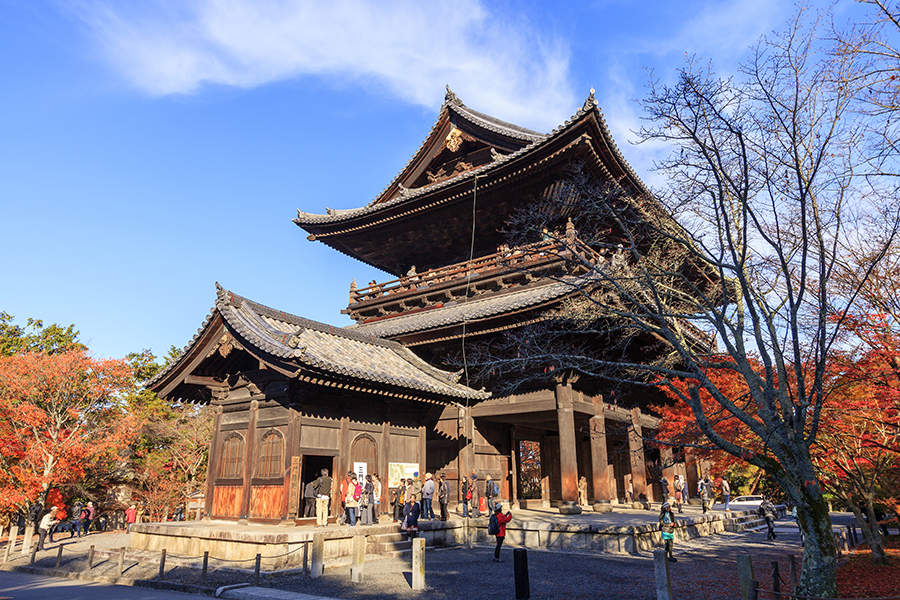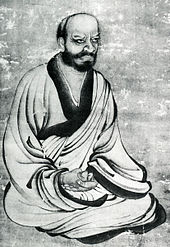Long Island
Zen Center
About
The Zen Center is located in Long Island in New York.
Contact
Ithaca
Zen Center
About
Ithaca Zen Center is located on 60 rural acres about 8 miles south of Ithaca, NY. The center maintains a daily practice schedule and hosts retreats throughout the year.
Contact
Bodhi Manda
Zen Center
About
Bodhi Manda Zen Center is a Rinzai Zen practice center located in a high desert river canyon in the Jemez Mountains, 60 miles northwest of Albuquerque, New Mexico.
Contact
Enpuku-ji
Zen Center
About
Enpuku-ji is a Rinzai Zen practice centre located in a lively, ethnic neighbourhood of Montreal.The centre provides a daily schedule of morning and evening meditation in the style and spirit of the teaching of Kyozan Joshu Sasaki, Roshi.
Contact
Silent Shin
Zendo
About
Rinzai Zen Buddhist practice in Berkeley, California with Tokuju Genshu Chris Ro, Osho.
Contact
Mt Baldy
Zen Center
About
Located in the San Gabriel Mountains 40 miles east of Los Angeles, the Mount Baldy Zen Center is a monastic style retreat center for Joshu Sasaki Roshi’s Rinzai-Ji community.
Contact
Entsu-ji
Zen of Bainbridge Island
About
Entsuji-Zen is a Buddhist community centered in Bainbridge Island, Washington. Together with incorporating as a nonprofit group in the State of Washington, the Bainbridge Zendo was built in 1995. Leaders of our sangha are Shozan (Dr. Marc Joslyn , ordained as a Zen priest and teacher in 1982) and his wife Myodo (Hajnalka Joslyn).
Contact
Haku-un-ji
Zen Center
About
Founded in 1994 by resident priest Sokai Geoffrey Barratt, Haku-un-ji (White Cloud Temple) provides a tranquil and supportive environment for the practice and study of Zen Buddhism in the tradition of Lin-Chi (Rinzai), a prominent 10th century Chinese Master. Haku-un-ji is affiliated with a network of Zen centers that make up Rinzai-ji Inc.
Contact
Hogaku-ji
Heki Un Zan
About
Dharma Mountain Zen Center, located in the Grand Valley of Western Colorado, is of the Rinzai tradition in the lineage of Joshu Sasaki Roshi. The Center is led by ordained Osho (Zen Buddhist priest) Seido, and his wife Shunko, an ordained nun. Both Seido and Shunko have been students of Sasaki Roshi for over 35 years. Though many of the members of Dharma Mountain have practiced together as an unofficial sangha (Zen community) for many years, it was in October of 2001 that the center was formally established.
Contact
Hokoku-An
Zen Center
About
Located in Columbia.
Contact
Hōun-an 法雲庵
Charles River Zen
About
Charles River Zen is an urban Zen group in the Boston area. We offer traditional Zen practice that is informed by the teachings of the Japanese Rinzai Zen tradition as transmitted through Denkyo-shitsu Joshu Sasaki and Mitta-kutsu Soen Nakagawa Roshis. The resident Osho is Kyō-On Dokurō, who is a dharma heir to Shinge-shitsu Roko Sherry Chayat Roshi of the Zen Studies Society and a Rinzai-ji Oshō.
Contact
Genkai-ji
Zen Center
About
Genkai-ji Zen Center is dedicated to advancing the teaching of Tathagata Zen as taught by Kyozan Joshu Roshi, and to creating a peaceful space for contemplation for community members of all faiths.
Contact
Blue Ridge
Zen Group
About
Our origin was with a few members willing to climb through a second story window once a week to get to our zendo in a condemned building. In 1975 we organized as the Blue Ridge Zen Group, and now have a walk-in zendo for daily practice in Charlottesville.
Contact
Upper Valley
Zen center
About
Upper Valley Zen Center offers community supported practice in White River Junction, Vermont, and at nearby Dartmouth College, led by Gendo Allyn Field. The Zen Center and Dartmouth collaborate on an annual seminar combining Buddhist academic and practice perspectives. All are welcome, no experience necessary.
Contact
Princeton
Zen Society
About
Located in Princeton.
Contact
Zen Centre
of Vancouver
About
This city centre offers a comprehensive program of daily zazen, introductory classes, retreats, study, and guidance by teacher Eshin Godfrey Osho assisted by two ordained members and senior practitioners. Growth in the decades following Roshi’s first visit in 1966 has resulted in the present facilities which can accommodate all the Zen programs.
Contact
Bodhidharma
Zendo Wien
About
The organization of the Zen center was founded 1979 by the abbot Genro Seiun Osho and it serves as the legal part of the Bodhidharma Zendo. The Order of members was founded in 1983 and is a member of the Austrian Buddhist Religious Society. The Order follows the tradition of Rinzai Zen as taught by Kyozan Joshu Sasaki Roshi. As of March, 2012 Kigen Seigaku Osho has been the spiritual leader of the Bodhidharma Zendo and of the Austrian Rinzai-ji Order.
Contact
Bodhidharma
Zendo in Augsburg
About
Augsburg, a City in the south of Germany, has, including surrounding, 400.000 inhabitants. Encouraged by Roshi in January 2000 the Bodhidharma Zendo Augsburg was established with a regular weekly zazen schedule, guided by Hōgen.
Contact
Zen Gruppe
Berlin-Karlshorst
About
Located in Berlin, Germany.
Contact
Rinzai
Zen Center Oslo
About
Located in Oslo, Norway. Please telephone or e-mail for the exact address.
Contact
The origin of these two traditions dates to about the 8th century in China, when many dynamic individual teachers began to put their various stamps on Zen practice. The Rinzai tradition is named for the Chinese Master of the same name in Japanese (Lin-chi, in Chinese), while Soto takes its name from the first two letters of Masters Sozan (Ts’ao-shan Pen-chi) and his teacher, Tozan (Tung-shan Liang-chieh). The Japanese Soto school was profoundly influenced by Masters Dogen, who brought the tradition from China in the 13th century and wrote about it extensively, and Keizan, who popularized it nearly 100 years later. The modern Japanese Rinzai tradition was profoundly influenced by Master Hakuin in the early 1700’s.
The primary differences between the two schools are in their approaches to realization and their practice methods. The two schools are not incompatible; their commonalities far outweigh their differences, and some Zen teachers combine both approaches, particularly those within the Harada-Yasutani lineage. The following is an oversimplification of their differences but can serve as an introduction.
The Rinzai tradition holds that the experience of realization (kensho, satori, awakening, enlightenment) is of central importance, for this experience is what ends suffering. Realization is primarily viewed as an event which one “has,” an event that represents or leads to a radical shift in one’s understanding about who they are and what reality is. It is recognized that there can be many levels of profundity of such an experience, so it is one which can be accurately evaluated and confirmed only by one who has also “had” this shift, i.e., one’s master. This experience is something that is seen, at least initially, as a goal of practice.
In addition to zazen, attention to daily life, and intellectual study, Rinzai employs the intense examination of koans as an important, perhaps the most important aspect of practice. In the formal sense, koans are cases of life-changing encounters between Zen masters and disciples in ancient China during the “golden age” of Zen. The two most famous collections are the Pi-yen-lu, the “Blue Cliff Record” and the Mumonkan, the “Gateless Gate.” Typically, a koan is assigned by a teacher to a student who then “works” on the koan until it is “solved” to the satisfaction of the teacher. Most teachers require that their students go through a curriculum of koans as part of their training before they are qualified to receive dharma transmission. This realization (in the sense of having an experience), completing a koan curriculum, or receiving dharma transmission is not a final goal in Rinzai, for one continues to practice, to do zazen, to deepen his or her realization, and to help others.
Miura Isshu, Zen teacher, Hakuin Rinzai line, dies at 75. The author of 'The Zen Koan' along with Ruth Fuller Sasaki. Ruth Fuller Sasaki (Oct. 24, 1967), born Ruth Fuller, was an important figure in the development of Buddhism in the United States. Rinzai Gigen, father of the line or school of Rinzai Zen, died January 10th, 866 A.D. His date of birth is unknown, but it is generally taken that his teaching career was not much longer than a decade. The Rinzai Line is one of the Five Houses of Zen, best thought of as teaching styles that developed within the Zen school, following a great master. RINZAI-JI Joshu Sasaki's Home Temple. WEEKLY SCHEDULE open to all. GASSHO Thank you for your support. Zen Center Closed Temporarily. Due to COVID-19 regulations, Rinzai Ji is closed to the public until the state of California permits it to reopen. Norman Fischer, a contemporary American Soto Roshi, poet and author, gave an excellent overview of both Soto and Rinzai Schools: Soto: “Soto’s style of practice can be traced back to Shitou (700-790) whose poem “The Harmony of Difference and Sameness” (Sandoaki) is an important early expression of Zen Buddhism and is chanted in Soto temples to this day.
Rinzai (Chinese: Lin Chi) was one of the founders of Zen (Ch'an) Buddhism. This is a complete translation into English of the Record of Rinzai. The only other one was published by the Buddhist Society in 1975 and is out of print. It is an excellent translation. It strikes a good balance between readability and faithfulness to the text.
The Soto tradition does not deny that many people have special experiences of realization but does see the seeking of them to be problematic. It also recognized that some shift in one’s understanding is necessary, but that shift need not be dramatic or “special.” Soto holds that what is centrally important is ongoing actualization of realization. Rather than being a special event, awakening is seen primarily as an ongoing process, always and constantly occurring here and now, always exactly at the point of the interdependent encounter between “you” and “the universe” as it is experienced in your ever-changing awareness, here and now. Awakening, at least in part, is the experiential “waking up” to that fact and to this ongoing flow of your life, which will consist of both “special” and “ordinary” moments.


The primary practice of Soto is zazen, but it is a zazen not aimed at accomplishing anything. It is zazen without a goal. Rather than being guided by trying to “get” or “attain” something, the practitioner is guided by the intention of simply being aware of what is actually occurring in the eternal “present moment.” This type of zazen is called shikantaza, which translates as “just sitting.” In addition to shikantaza zazen, Soto emphasizes what Dogen called genjokoan, the realization that everything we do is an expression of ultimate reality and an opportunity to awaken. These approaches are consistent with Dogen’s assertions of non-duality, such as “practice is realization” and “zazen itself is satori.” Tony’s teaching approach is within this shikantaza/genjokoan tradition of Soto Zen.

Rinzai Zen Koan

Rinzai School

Rinzai Zen Mission Paia Maui
It may be helpful to consider that there are two basic definitions of the verb “realize.” One is “to grasp or understand clearly”; the other is “to make real.” Both are valid and each is necessary for a complete understanding of just what “realization” is. Rinzai emphasizes the first definition and Soto emphasizes the second, but each school acknowledges the validity of both.
